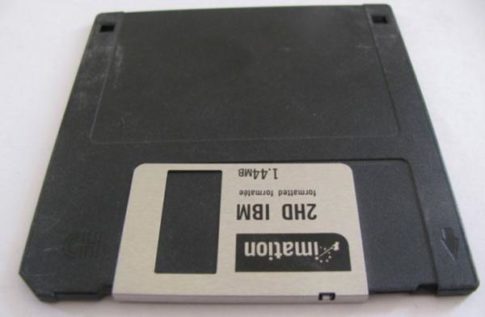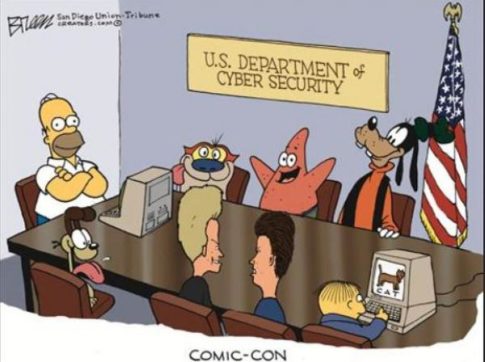– How Bad Are The US Computer Systems? An 8” Floppy Disc Houses Nuclear Coordinate Data:
If you thought that $80 billion a year would be a sufficient enough budget for the US government to systematically upgrade its computer systems, think again.
In a report released by nonpartisan congressional investigators found that about $60 billion of the government’s $80 billion IT budget goes straight to maintenance just to keep the aging technology running, not to modernization according to ABC News.
To make matters worse, the government is expected to spend $7 billion less in 2017. In addition to screwing people out of their social security payments, we can now add jeopardizing critical IT systems to the list of ‘out of the box’ cost cutting measures that the US government has come up with. Then again, money must be freed up in order to fund such toys such as $4.4 billion destroyers.
GAO information technology expert David Powner sums up the situation quite nicely, telling a House Oversight and Government Reform Committee at a hearing that “clearly, there are billions wasted.”
Forget billions being wasted for a moment, how about the disturbing fact that The Defense Department’s Strategic Automated Command and Control System, the control system used to coordinate the operational functions of the United States nuclear forces, runs on a 1970s IBM computing platform and uses 8” floppy discs to store data.
That’s not all, the list continues…
Treasury’s individual and business master files, the authoritative data sources for taxpayer information. The systems are about 56 years old and use an outdated computer language that is difficult to write and maintain. Treasury plans to replace the systems but has no firm dates.
Social Security systems that are used to determine eligibility and estimate benefits, about 31 years old. Some use a programming language called COBOL, dating to the late 1950s and early 1960s. “Most of the employees who developed these systems are ready to retire and the agency will lose their collective knowledge,” the report said. “Training new employees to maintain the older systems takes a lot of time.” Social Security has no plans to replace the entire system but is eliminating and upgrading older and costlier components. It is also rehiring retirees who know the technology.
Medicare’s Appeals System, which is only 11 years old, faces challenges keeping up with a growing number of appeals, as well as questions from congressional offices following up on constituent concerns. The report says the agency has general plans to keep updating the system, depending on the availability of funds.
The Transportation Department’s Hazardous Materials Information System, used to track incidents and keep information regulators rely on. The system is about 41 years old, and vendors no longer support some of its software, which can create security risks. The department plans to complete its modernization program in 2018.
Although the report concluded that legacy IT investments are becoming obsolete and have outlived their effectiveness, nothing concrete has been done about the issue outside of recent legislation creating a $3 billion revolving fund for replacing and upgrading older technology – apparently something the government can’t figure out how to do with the already allotted $80 billion. To add to the insanity, it appears as though for the first time congress cares about money when it comes to this situation, with rumblings of Republicans wanting to see tangible cost savings from the upgrades.
“Legacy federal IT investments are becoming obsolete,” the report concluded. “The federal government runs the risk of continuing to maintain investments that have outlived their effectiveness and are consuming resources that outweigh their benefits.”
The White House has been nudging agencies to identify obsolete systems for replacement, but GAO said that clearer, more specific goals and timetables are needed. A starting point could be recent legislation supported by the administration to create a revolving fund of $3 billion for replacing or upgrading older technology.
“This is not a partisan issue,” said committee chairman Jason Chaffetz, R-Utah, who supports modernizing the government’s aging systems, but has not committed to any particular legislation.
“We all need to come together on this, on both sides of the aisle,” added Chaffetz. “It is a vital part of the infrastructure we need in order to have a fully functional government.”
But some Republicans said before they’ll agree, they first want concrete evidence that new systems will save money. That could be a difficult test, since government technology projects have a mixed record.
* * *
This is how the government manages itself – Everyone feel safe?
* * *
PayPal: Donate in USD
PayPal: Donate in EUR
PayPal: Donate in GBP

